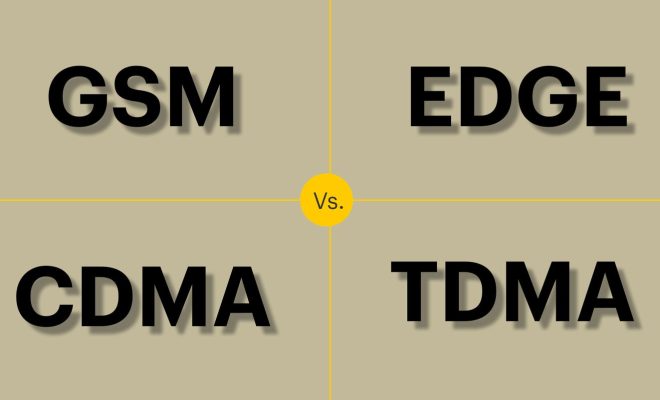GSM vs. EDGE vs. CDMA vs. TDMA

In the world of mobile communication, different technologies have been developed and introduced over the years. Some of the most widely used ones are GSM, EDGE, CDMA, and TDMA. Each of these technologies has its own set of strengths and weaknesses, and understanding them can help you make better choices when choosing a mobile phone or network provider.
GSM (Global System for Mobile Communications) is the most widely used mobile communication technology in the world, with over 80% of subscribers using GSM networks. It was developed by the European Telecommunications Standards Institute (ETSI) and is primarily used in Europe, Asia, and Africa. GSM uses a combination of frequency division multiple access (FDMA) and time division multiple access (TDMA) to allow multiple users to share the same frequency band. GSM is often considered a 2G (second generation) technology and provides voice and limited data services.
EDGE (Enhanced Data Rates for GSM Evolution) is an extension of GSM and is also a 2G technology. It was developed to provide faster data transfer rates than what was possible with standard GSM. EDGE uses a faster form of TDMA and can provide data transfer rates of up to 384 kbps. However, EDGE is still a relatively slow technology compared to 3G and 4G networks.
CDMA (Code Division Multiple Access) is a mobile communication technology that allows multiple users to share the same frequency band using different codes. CDMA does not require the use of TDMA, making it more efficient than GSM and EDGE. CDMA is primarily used in North and South America, and also in some parts of Asia. CDMA is a 2G and 3G technology and provides voice and data services.
TDMA (Time Division Multiple Access) is a mobile communication technology that was widely used before the advent of CDMA and GSM. It uses time slots to allow multiple users to share the same frequency band. TDMA is still used in some parts of the world but has largely been replaced by more advanced technologies.
When it comes to choosing a mobile phone or network provider, it is important to understand the differences between these technologies. GSM and EDGE are widely used and provide basic voice and data services. CDMA is primarily used in North and South America and provides both voice and data services. TDMA is still used in some parts of the world but is no longer as widely used as it once was.
Overall, the choice of mobile communication technology will largely depend on the coverage and services provided by your network provider. It is important to choose a provider that offers good coverage and reliable services, regardless of the mobile communication technology they use.





